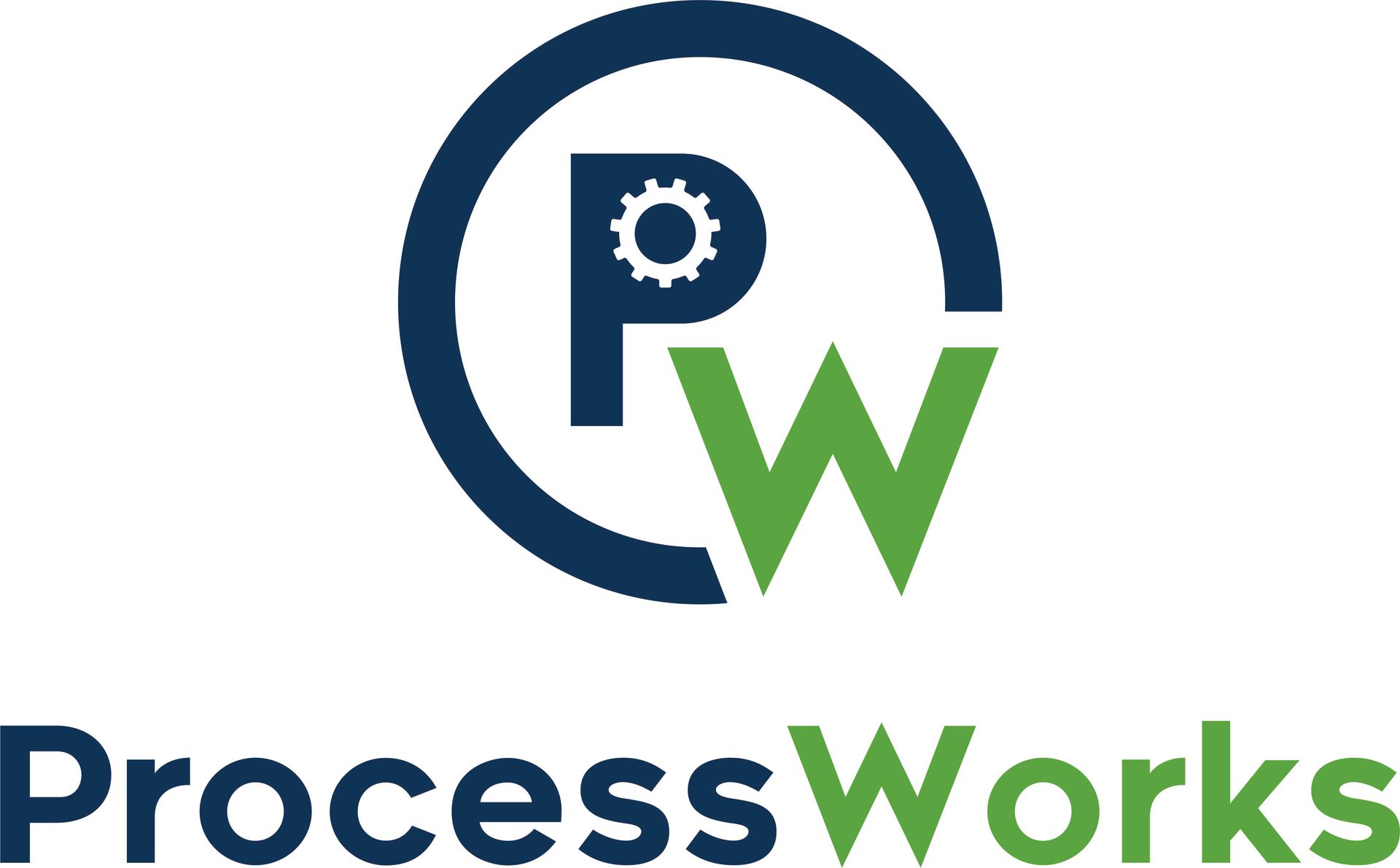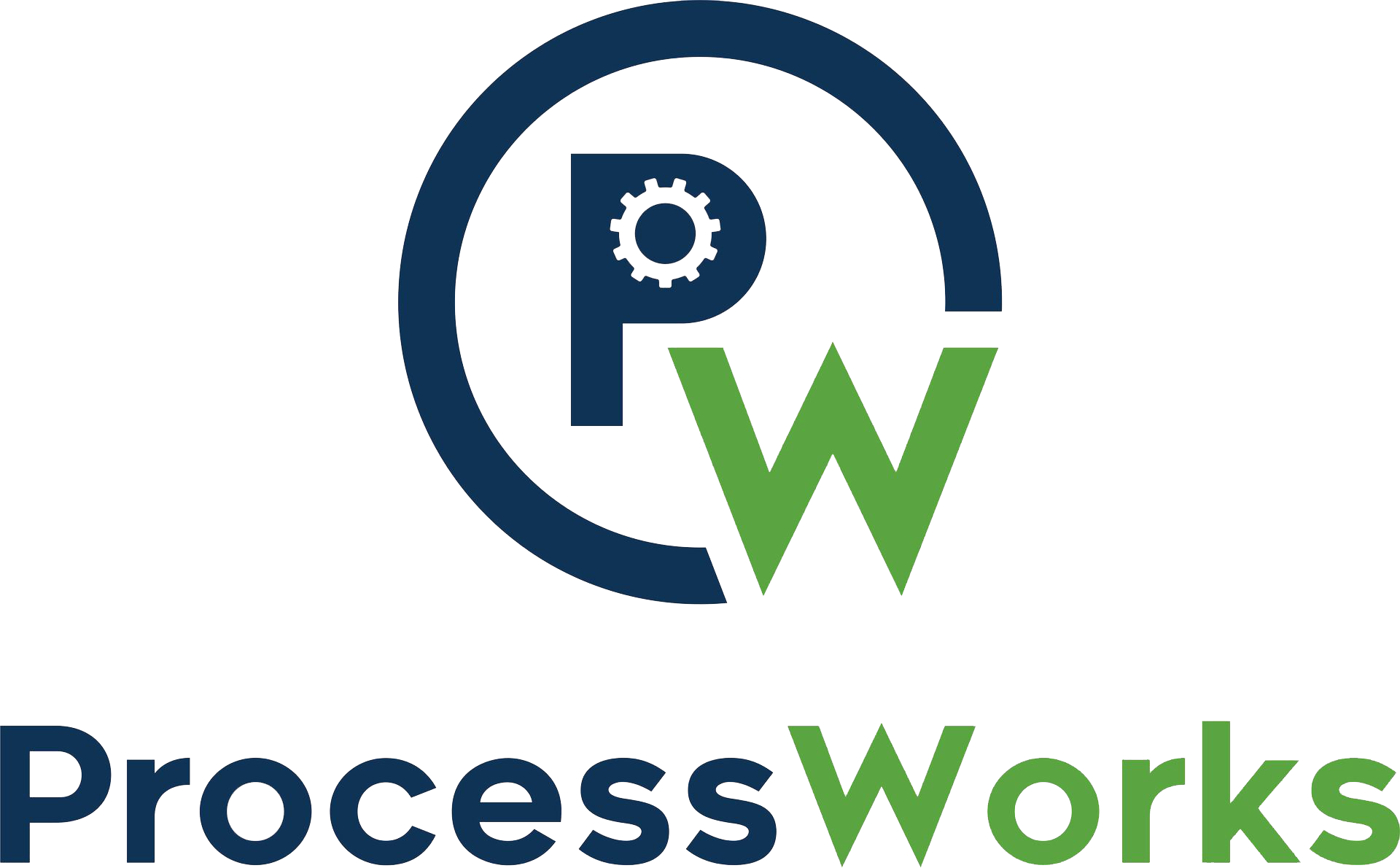Process Works™ Blog

When organizations begin to document their operations, the natural instinct is to place everything inside a core process document. After all, if a process outlines how something should be done, why not capture every step and every reminder in the same place? But here’s the problem: process documents are meant to provide clarity, not overwhelm. When they become cluttered with too much detail, they lose their power. That’s why the most effective organizations separate core processes from checklists , and they keep those checklists outside of the main process documentation. Doing this doesn’t just tidy things up, it brings practical, day-to-day advantages that directly impact efficiency, accountability, and scalability. Let’s break down why standalone checklists matter and how they help businesses run smoother. 1. Keeping Core Process Documents Brief and Useful Think of your core process documents as a map, not a turn-by-turn GPS. They should provide a clear path and overall direction, not bog down the reader with every micro-step. When you stuff a process document with details that have no impact on the overall result, it stops being a big-picture guide and starts looking like a cluttered manual. This makes it harder for team members to focus on the pressure points within the process, where doing things differently has a true impact on the end result. By moving those details into a separate checklist, you keep the process documents lean, clean, and easy to follow. Processes stay strategic; checklists stay tactical. And that distinction helps everyone absorb the right information at the right level. 2. Easier Access for Day-to-Day Use Imagine a team member who just needs to run through the steps of a recurring task, like onboarding a new client or preparing month-end reports. They don’t want to dig through the entire process - they just need the steps for one specific task. That’s where standalone checklists shine. They’re shorter, faster to reference, and often better suited to daily execution. A checklist can live in a shared drive, project management software, or even as a laminated sheet on someone’s desk. Team members can grab it and go. This accessibility reduces friction and encourages consistent use. And consistency is the hallmark of a well-run organization. 3. Faster and Simpler Updates Businesses evolve. Regulations change, tools get upgraded, and customer expectations shift. When that happens, updates need to occur – but that doesn’t mean you want to update your core process every time a new patch of your project management software releases. If you’ve buried those checklists inside your core documents, even small changes become a chore. You’ll need to reopen the process doc, circulate it, get approvals, and re-publish the entire thing. Not only is this cumbersome, but it also discourages timely updates. On the other hand, when checklists are standalone, you can update them quickly and frequently. A single person can tweak a step, add a reminder, or remove outdated instructions without wading through layers of approvals. This agility helps your organization stay current without creating a bottleneck. 4. Checklists Can Be Owned by One Person Core process documentation should never be the work of a lone individual. Processes define how the organization operates, so they demand group input, alignment, and buy-in. A collaborative effort ensures the process reflects the team’s collective knowledge and creates ownership across the board. But checklists are different. They’re tactical tools. They don’t require the same level of consensus because they don’t change the process itself - they just capture the steps needed to follow it. This means one person (often the one most familiar with the task) can take the lead in creating or editing the checklist. That saves time and keeps things moving. It also empowers subject matter experts to directly contribute their know-how without bogging down the whole team in unnecessary discussions. 5. The Best of Both Worlds: Processes and Checklists Working Together Separating checklists from processes doesn’t mean they should live in isolation. In fact, the most effective systems link them together. A process document might end with a line like: “See the ‘Client Onboarding Checklist’ for detailed steps.” That way, the process explains who’s responsible for what and how all of that fits into the bigger picture. The checklist, meanwhile, ensures no step gets missed in execution. Together, they form a complete system that’s easy to understand and easy to apply. Practical Example: The Hiring Process Let’s say your business documents the hiring process. The core process document might explain: Purpose: To consistently bring in top talent while ensuring compliance. Owner: The HR Manager. Steps: Post the job, screen applicants, conduct interviews, extend offer, complete onboarding. That’s the high-level framework. Now, imagine attaching a detailed checklist with items like: Draft job description using the approved template. Post on LinkedIn, Indeed, and internal job board. Schedule interview panel and send calendar invites. Run background checks. Send new hire paperwork within 24 hours of acceptance. The checklist keeps the recruiter on track without cluttering the process document. If something changes, you just update the checklist. The process document remains untouched. Conclusion: Simplicity and Flexibility in Action Separating checklists from core process documents might sound like a small detail, but in practice, it’s transformative. Processes stay strategic, concise, and collaborative. Checklists stay practical, accessible, and easy to update. Together, they create a system that’s both sturdy and adaptable; a framework that drives consistency without slowing the business down.

In many small businesses, processes and practices aren’t written down, they’re simply known. Over time, a way of doing things evolves, and long-term employees carry that knowledge in their heads. This “tribal knowledge” can seem efficient on the surface, but it hides real risks and costs. When operations depend on what only certain people know, the business becomes vulnerable in ways that may not be obvious until it’s too late. Every small business values its team members, especially those who have been there since the early days. These employees often become walking encyclopedias of the company’s operations. The problem isn’t their knowledge or their value; the problem is that the company cannot function without them. If only one person knows how to generate a monthly report, fix a key client’s recurring issue, or navigate a specific vendor relationship, the business is effectively dependent on that person’s continued presence. If they take a vacation, get sick, or leave the company, that knowledge goes with them. The result? Missed deadlines, unhappy customers, and costly disruptions. A healthy business should be able to operate smoothly even when any individual team member is unavailable. That’s not just about having backup people; it’s about building systems that make the business independent of any one person’s memory. One of the most common times the hidden costs of tribal knowledge show up is when you hire a new employee. In a workplace where “this is just how we do it” has never been documented, new hires are left to learn by trial and error or by shadowing busy colleagues who are pulled away from their own work to explain things verbally. This approach has two major problems: It’s inconsistent because two different trainers might explain a process in two different ways, leading to confusion and mistakes. It’s also incomplete; even well-intentioned coworkers may forget to mention critical steps simply because those steps have become second nature to them. When onboarding is slow and patchy, it takes longer for new hires to reach full productivity. This delay costs the business in wages, management time, and lost output. It also increases the risk that new employees become frustrated or disengaged before they’ve had a chance to succeed. Perhaps the most dangerous aspect of relying on tribal knowledge is that it creates blind spots for employees - especially newer ones. When a process isn’t documented, employees can’t check their understanding against a clear standard. They might think they’re doing something correctly when they’re not, leading to errors that go unnoticed until they cause real harm. For example, a salesperson may not realize there’s a specific approval process for discounting prices, or a bookkeeper may be unaware that certain expenses must be coded differently for tax purposes. These situations often happen because the person in question simply “doesn’t know what they don’t know”. Without a documented process to guide them, they can’t even ask the right questions. Over time, these small oversights add up to rework, compliance issues, lost sales, and unhappy customers. The costs of tribal knowledge are rarely obvious in a single moment - they’re cumulative. They show up as inconsistent quality in products or services, bottlenecks when key people are unavailable, increased training costs for new employees, errors and rework from incomplete instructions, and reduced scalability, because the business can’t grow faster than its ability to train people verbally. Over months or years, these inefficiencies can quietly erode profitability and stunt growth. Worse, they make the business fragile and vulnerable to the sudden loss of any employee who holds critical, undocumented knowledge. Fortunately, the cure for tribal knowledge isn’t complicated, it just takes commitment. The goal is to capture what’s in people’s heads and turn it into clear, repeatable processes that anyone in the business can follow. This shift isn’t about replacing your experienced employees—it’s about supporting them, protecting your business, and enabling future growth. When processes are documented, the benefits ripple throughout the business. Faster onboarding means new hires become productive sooner. Greater consistency improves quality and customer satisfaction. Operational resilience ensures work continues smoothly even when someone is out, and Scalability becomes possible because training is no longer a bottleneck. In short, you move from a business that depends on individuals to a business that depends on systems, which is a much stronger, more sustainable position.

You may spend countless hours identifying, documenting, and working to improve your core processes, but even the best-designed processes will fall flat if they aren’t implemented effectively. It’s not enough to define the “right way” of doing things; your team has to understand it, buy into it, and follow it consistently. The hard truth is this: without a strong rollout and management plan, process improvement efforts become nothing more than good intentions. So, how does one rollout a process effectively? First of all, the way you talk about the change can make or break the success of an updated process. Clear and consistent messaging helps eliminate confusion, builds trust, and encourages team alignment. Too often, process updates are announced in passing, buried in emails, or delivered with vague reasoning. That leaves team members unsure about why the change is happening or even what the change is, which increases resistance. Instead, be upfront and transparent. Explain not only what is changing, but why it’s changing, and when. What problems will this new process solve? How does it tie into the company’s larger goals? What benefits will team members see in their daily work? And most importantly – how do they stand to benefit? The more openly you share your thinking, the more likely people are to engage with and support the change. Reinforce the message through multiple channels: team meetings, one-on-one conversations, documentation, and visual aids if needed. Keep repeating the message until it sticks. When your team hears the same message from different leaders and in different contexts, it becomes part of the culture instead of just another announcement. But just like any other business initiative, new processes need to be tracked. If you’re not measuring the outcomes, how will you know if the process is working? And just as importantly, how will your team know that it matters? Start by identifying the key measurables tied to the process you’re updating. If it’s a customer service process, track resolution times or satisfaction scores. If it’s a sales process, monitor conversion rates or pipeline velocity. If it’s an internal workflow, look for indicators like task completion time, rework rates, or error reduction. Define these metrics before the rollout and monitor them closely after the process goes live. If the numbers aren’t moving in the right direction, dig deeper. Are people following the new process consistently? Is there a step that’s unclear or inefficient? Is the process achieving its intended outcome, or does it need to be refined? Sharing these metrics with your team creates accountability and visibility. When people see that the process is being tracked and that results are being reviewed, they understand its importance (and are more likely to take it seriously). In the Entrepreneurial Operating System® (EOS®), one of the core concepts is “Followed By All.” It means that once a process has been identified as the right way to do something, everyone in the organization must follow it without exception. This doesn’t happen automatically. It takes ongoing leadership attention, reinforcement, and management. After all, people naturally drift back to old habits if they don’t see that the new way is being monitored or enforced. Make sure managers are holding regular check-ins to see how the process is being followed. Encourage open dialogue; if someone is struggling with the new process or believes something doesn’t make sense, make space for that feedback. Sometimes resistance uncovers areas that need clarification or improvement. But at the same time, set the expectation that processes aren’t optional. They’re how your company delivers consistent, high-quality work. You can (and should) revise a process if it’s not serving its purpose—but until it’s officially changed, everyone is expected to follow it. Creating this level of discipline and consistency is what separates high-performing teams from chaotic ones. When everyone is on the same page, your processes become scalable, teachable, and reliable—and that’s when real efficiency and excellence take hold. So implementing new processes is about far more than writing steps on a page. It’s about gaining buy-in, tracking performance, and managing execution with consistency and intention. If you can clearly communicate why the change is happening, measure its impact, and hold people accountable to following it, you’ll start to see the real benefits of process improvement: smoother operations, stronger teams, and better results. Remember, great processes don’t work unless people follow them, and people don’t follow processes unless leaders make it easy, clear, and non-negotiable to do so. That’s the real secret sauce of Process Improvement.

So you sit down to document your core process list, and you have a solid collection of 10-15 processes that you believe are the heart of your business – they are the things that keep your business running. But when it comes time to document your processes, you can’t shake the feeling that something isn’t quite right… We see this happen in almost every organization we work with. The truth is that most companies think they can identify their core processes with relative ease. And most companies are wrong. One of the most common missteps we see organizations make is assuming that their core processes should mirror their org chart. At first glance, this seems logical. The structure of the business outlines who is responsible for what, so it feels natural to assume that each department owns and executes a distinct core process. For example, HR might be assigned “Hiring,” Finance “Budgeting,” and Sales “Selling.” However, this department-based view oversimplifies the complexity of how work flows through the organization. In reality, core processes almost always cross departmental lines. Take hiring as an example. While HR may coordinate job postings and interviews, the hiring manager is usually from another department. IT gets involved to set up equipment and access. Facilities might be responsible for preparing workspace. Payroll and Finance may step in for compensation and onboarding. Suddenly, a process that was thought to "belong" to HR actually touches five or six different functions. When organizations build process lists based solely on their departments, they unintentionally silo their thinking and miss critical interdependencies. Another related mistake is the belief that each department only participates in one core process. Leaders often start process mapping exercises with the assumption that each team is responsible for their one "main thing." But the reality is much messier. Most departments participate in multiple core processes, even if they don't lead them. For example, your IT department likely plays a role in onboarding new employees, deploying new products, and supporting customer service tools—all distinct processes. Failing to recognize these overlaps can lead to blind spots that undermine process efficiency and effectiveness. What’s more, this kind of compartmentalized thinking leads to both redundancies and gaps in process execution. Redundancies occur when multiple departments unknowingly duplicate efforts. For instance, both Sales and Marketing might maintain separate customer contact lists, leading to inconsistencies and wasted time. Or, different teams might create their own reports on the same data, using different tools and metrics, leading to confusion about which numbers are accurate. These redundancies not only waste time and resources, but they can also erode trust in internal systems and data. On the other side of the spectrum, gaps emerge when everyone assumes a particular task is someone else's responsibility. These gaps often happen in handoffs—those critical moments when a process moves from one team to another. If no one owns the handoff, important details can fall through the cracks. For example, a customer issue might be escalated from Support to Engineering, but without a defined handoff protocol, the issue might sit in limbo for days. Or a sales contract might be signed, but if the transition to the implementation team isn’t clearly defined, project kickoff could be delayed or mishandled. To avoid these pitfalls, organizations need to shift how they think about core processes. Rather than starting with the org chart, start by asking: What are the key outcomes we deliver to our customers or stakeholders? Then work backward to understand the end-to-end processes that produce those outcomes. These are your true core processes, and they often span across multiple departments and roles. Another useful technique is process mapping sessions that involve cross-functional teams, which is why we always try to bring people into our sessions who are involved in different parts of the process. Bringing people together from across the organization to jointly map out how work flows in real life (not just on paper) helps expose where the disconnects, overlaps, and handoffs occur. These sessions often reveal surprises—teams discover they’re doing the same work twice or relying on outdated information. They also clarify the actual flow of value through the organization, which rarely follows a linear, department-by-department path. The first draft of your core process list will be wrong. That’s okay. The goal isn’t to get it perfect on the first try—it’s to start the conversation and iterate. As you refine your process list through observation, discussion, and mapping, you’ll gain deeper insights into how your organization really operates. And that understanding is the foundation for streamlining operations, eliminating waste, and ultimately delivering better outcomes for your customers. When you stop treating processes as departmental silos and start treating them as cross-functional systems, you uncover the real levers for improving how your business runs. And that’s when the real transformation begins.

For many organizations, day-to-day operations depend on processes that have evolved over time; often informally and without proper documentation. While things may appear to be running smoothly on the surface, a lack of clear, written processes can lead to a surprising amount of inefficiency and inconsistency. Without documentation, employees tend to rely on personal experience, memory, or guidance from peers to carry out tasks. Over time, this creates variations in how work gets done. It isn't that anyone is doing the process wrong, they're just all doing it differently . These variations can lead to misunderstandings, rework, delays, and ultimately, a dip in the quality of the final output. Imagine five employees completing the same task five different ways. Each method might be “good enough,” but this kind of inconsistency can confuse team members, create training headaches for new hires, and make it nearly impossible to track or improve performance over time. It can also frustrate customers or clients when the outcomes they receive vary depending on who completed the work. The solution is surprisingly straightforward: agree on one right way to do each process and document it clearly. By taking the time to define and align the team on the best method for completing a task, departments can eliminate the guesswork and standardize their efforts. When everyone is following the same documented process, confusion drops significantly. Employees no longer waste time figuring out how something should be done or worrying about second-guessing their efforts. They also know exactly where to look for guidance if they get stuck. This clarity boosts confidence, speeds up onboarding for new staff, and ensures consistency across the board. Standardizing processes also streamlines work. With fewer variations and less improvisation, tasks are completed more efficiently. Teams can identify bottlenecks and eliminate unnecessary steps because they’re working from a shared blueprint. This makes it easier to introduce automation, delegate tasks, and optimize workflows for better results. Perhaps most importantly, following one agreed-upon process improves the quality of the work. When everyone is aligned on best practices, there's a higher chance that the work will meet expectations every time. Quality becomes predictable, not accidental . This is especially important in client-facing roles or industries where precision, compliance, and consistency are critical. Of course, agreeing on the "one right way" doesn’t mean the process is set in stone forever. It should evolve as the business grows, technologies change, or better methods emerge. But having a documented starting point makes it easier to update, share, and reinforce those improvements across the team. Standardizing processes is not about control; it’s about clarity. Better process empowers teams to work smarter, not harder, and creates a strong foundation for continuous improvement. Once clear expectations are set for everyone involved in the process, friction is reduced and progress can continue to build over time.

Most small businesses inherently understand the value of efficiency; that’s why companies are constantly striving for ways to improve workflows, minimize errors, and maximize output. Writing down processes is one of the simplest yet most powerful strategies to achieve these goals. While it may seem like a basic task, physically documenting processes can significantly impact the way a business operates, improving clarity, fostering best practices, and uncovering inefficiencies that could otherwise go unnoticed. So, let’s dive into why this practice can be a game-changer for your organization. One of the most immediate and noticeable benefits of writing down processes is the reduction in confusion. In any organization, there are multiple people working on various tasks that contribute to the bigger picture. Without a clear, standardized procedure in place, employees can inadvertently work at cross-purposes, duplicate efforts, or follow outdated methods that may no longer be effective. Documenting process helps to create a single source of truth. When you write down the steps and activities of a process, it ensures that everyone knows what is expected of them and how they’re expected to do it. Employees no longer have to rely on vague instructions or tribal knowledge. They have a clear reference point, reducing the risk of misunderstanding or miscommunication. Another key advantage of documenting business processes is the ability to educate employees on best practices. Every organization has a way of doing things that works best for them. However, without a documented process, these practices remain in the minds of key individuals and aren’t shared with the broader team. This leads to inconsistency, where different employees follow different methods, leading to inefficiencies, mistakes, or slowdowns in productivity. Writing down processes provides an opportunity to codify the best practices that make your business successful. When your employees have access to clear, written guidelines, they can better understand the most effective ways to accomplish tasks. It becomes easier for new hires to quickly get up to speed, and current team members can reference the processes when in doubt, ensuring everyone is aligned. Let’s say you’ve developed an effective and streamlined process for managing customer complaints. By writing down the steps—how to acknowledge the complaint, gather necessary details, and escalate to the correct department—you provide a consistent framework for all employees to follow. This means that no matter who handles the complaint, they’ll do so using the most effective method, leading to quicker resolution and better customer satisfaction. Conversely, another one of the most powerful aspects of writing down processes is the ability to highlight when things aren’t being done the right way. Without documented processes, inefficiencies or mistakes may go unnoticed until they cause significant issues. However, when you put processes on paper, you create a clear roadmap that can be referenced and evaluated for performance. By periodically reviewing written processes, you can easily spot bottlenecks, redundant steps, or practices that no longer align with the company’s goals. This becomes especially important as businesses scale and evolve. What once worked well may no longer be the most efficient approach, and written processes give you a tangible way to analyze and refine your workflows. For example, a company that has documented its sales process may notice through regular review that certain steps are consistently taking longer than expected. Upon further investigation, they might discover that the initial client qualification process is overly complicated and could be streamlined. The written process brings this issue to the surface, enabling management to make necessary adjustments and improve efficiency. What’s more, as a business grows, the need for standardized processes becomes even more critical. What worked for a small team may not be as effective when your company expands. By writing down your processes, you create a blueprint that can scale as your business evolves. Whether you’re hiring new employees, opening new branches, or expanding to new markets, documented processes make it easier to replicate success. The documentation also ensures that processes remain consistent, regardless of turnover. Without documented processes, you risk losing valuable knowledge and expertise when employees leave or transition to new roles. Written processes allow for smoother onboarding and help reduce the learning curve for new employees. They also create a foundation for continuous improvement, as businesses can make adjustments to the documented processes over time to accommodate changes in the market, technology, or business goals. There’s also the question of accountability: When business processes are written down, they provide a clear standard of performance that holds employees accountable. Everyone understands their roles and responsibilities within the broader framework, and there’s no ambiguity about what needs to be done. This fosters a culture of accountability, where employees are empowered to take ownership of their tasks and make informed decisions. When individuals know exactly how things should be done, they can take pride in following the process correctly. And if something goes wrong, the documentation provides a clear path to troubleshooting and resolving the issue. This sense of ownership and accountability helps improve overall performance and drives the business toward greater success. Incorporating written business processes may seem like a simple step, but it can have a profound impact on your organization’s efficiency, consistency, and growth. By minimizing confusion, educating employees on best practices, and identifying when things aren’t being done right, documented processes become an invaluable tool for achieving long-term success. Moreover, they empower employees, create a culture of accountability, and help businesses scale smoothly.

It’s night time on a clear summer evening, and you are standing on a hill overlooking a causeway that spans a shallow river. You see a car come driving across the causeway and for a reason that is unknown to you the car suddenly swerves and drives through the barrier and into the river. You have the usual resources on you that you normally would (including a cell phone with service). What do you do? If you are like many, the first thing you would do in this situation is call 911. Fortunately for everyone, the first responders arrive on the scene within 5 minutes. Once present, the first thing they do is rescue the driver. Our driver was alone in the car, and after first responders manage to break the window and get him out of the car and onto the shore he is okay. Wet, in shock, but stable. Next, a recovery crew shows up to attempt to retrieve the car from the river. It’s a shallow river, after all; and currently it has a car sticking out of it. The recovery manages to get the (totaled) car our of the river and tows it away to a junk yard. The driver is safe. The car is recovered. But there’s still a gap in the bridge. City planners and construction professionals meet to discuss building back the barrier and how to prevent accidents like this from occurring in the future. Talking to the driver uncovers that the reason he swerved off the road is because he was swerving to avoid a deep puddle left behind by a recent rainstorm and couldn’t see the barrier clearly enough to avoid it. Plans are drawn up to more clearly mark the guiderail and to even out and re-pave the causeway to make it less prone to flooding. You may be asking yourself; I thought this was a business process blog. What does this story have to with business process? Crisis management is something that comes to us intuitively as leaders. We rely on our wisdom, knowledge, and experience to carry us through tough situations. However not every person in our organization may have the experiences we have; they may not know how to function in a crisis, or what the first step may be to put out a departmental fire. We know that if they freeze in their indecision the situation can only get worse; but it is difficult to give our people confidence unless we give them direction. So what can we learn from this parable? The first thing the first responders did when they arrived on the scene was to Rescue the driver. They took action to maintain the critical parts of the situation back to stasis before they worried about anything else. They “stopped the bleeding”. This is often the first step needed to solve any crisis; if the damage is ongoing, find a way to stop it. If there is a data leak and your bank information is compromised, for instance, you freeze the accounts. After the situation is returned to stasis the recovery begins. This step is all about evaluation – what can be salvaged? What is “spilled milk”? The point is not to get caught up in trying to salvage everything you can, but evaluating what is worth attempting to salvage and what needs to be let go. In the case of the information breach, it isn’t wise to attempt to salvage the frozen bank account since the information has been compromised; the account must remain frozen until a new bank account can be created. Once the rescue and the evaluation steps are done, then the root cause analysis begins and the question is asked, “how do we make sure this doesn’t happen again?” If the data was compromised due to a lackluster cybersecurity system, an investigation should be done to find a stronger one. Unlike during the rescue, we have the luxury of time in this stage – we want to do our research so that we are truly building back better. Not every crisis will fit into this action plan, but for people newer to the workforce or to leadership that lack the knowledge and the confidence to take action, an action plan like this can make the difference between a small fire and a large one. Because in a crisis it isn’t about perfection, it’s about minimizing the damage. And if we can get everyone in our organizations on the same page about that, we have the opportunity to make the fallout from those fires a lot less devastating.

In work as in life, change is inevitable. Whether it’s adapting to new technologies, shifting market demands, or internal restructuring, how an organization prepares for change can make or break its success. Effective change preparation involves evaluating the reasons for change, assessing the readiness of the team, crafting the right messages, and ensuring continued enforcement and accountability. Successful change management means handling all of these aspects gracefully, which can be a challenge for any organization; but each is a critical element to a smooth transition. Before initiating any change, it’s crucial to understand why the change is necessary. This involves a thorough analysis of internal and external factors that are driving the need for the change. Internally, it could be due to inefficiencies in current processes, declining performance, or feedback from employees and stakeholders. Externally, it might be due to market trends, competitive pressures, or regulatory requirements. A clear understanding of the reasons behind the change helps in setting precise objectives and outcomes. It also aids in gaining the buy-in from key stakeholders by demonstrating the tangible benefits of the change. Creating a well-documented case for the transition, supported by data and analytics, can further solidify the necessity of the change. Once the need for change is established, the next step is to assess the readiness of the organization and its people. This involves evaluating the current state of the workforce, including their skills, attitudes, and willingness to embrace the change. Conducting surveys, interviews, and focus groups can provide valuable insights into the team’s perception of the impending change. It’s essential to identify potential resistance and areas where additional support might be needed. Understanding the emotional and psychological state of employees can help in tailoring the change management strategy to address their concerns. Developing a readiness assessment framework that includes evaluating the organizational culture, leadership support, and existing change management capabilities can provide a comprehensive view of the organization’s preparedness. Part of this step also includes the potential for the acceptance that the timing may not be right; this is where delicate questions must be asked about the urgency of the change. If there are other factors leading to increased stress in the team (or teams) affected by the change the timing of the decision may need to be evaluated, but often the answer in these situations is not straightforward. Once a decision has been made to enact the change, however, effective communication is critical. How the change is communicated can significantly impact its acceptance and implementation. It’s crucial to craft clear, consistent, and transparent messages that articulate the vision, benefits, and impact of the change. Tailoring the message to different audiences within the organization ensures that everyone understands their role in the change process. Using a variety of communication channels, such as emails, town hall meetings, and one-on-one discussions, can help in reaching a wider audience. Additionally, providing regular updates and being open to feedback can foster a sense of involvement and ownership among employees. It’s also important to highlight the positive aspects of the change while being honest about the challenges that may arise. This balanced approach can build trust and reduce anxiety, making the transition smoother for everyone involved. Implementing the change, however, is just the beginning; ensuring its sustainability requires continuous enforcement and accountability. Establishing clear metrics and performance indicators can help in tracking the progress and effectiveness of the change. Regular reviews and assessments can identify any deviations and areas for improvement. Leadership plays a critical role in reinforcing the change. Leaders must model the desired behaviors and demonstrate commitment to the new ways of working. Providing ongoing training and support can help employees adapt to the new processes and systems. Recognizing and rewarding those who embrace the change can further encourage compliance and foster a culture of continuous improvement. It’s also important to address any issues or resistance promptly. Creating feedback loops where employees can voice their concerns and suggestions can help in refining the change strategy. Ensuring that everyone is held accountable to the new policies and practices can drive long-term success and embed the change into the organizational fabric. Preparing for change is a multifaceted process that requires careful planning, clear communication, and ongoing support. If they handle them correctly, organizations can navigate the complexities of change and emerge stronger and more resilient than ever before; but getting to that place can be a challenge. But embracing change as an opportunity for growth and improvement can transform challenges into a competitive advantage, paving the way for more sustained success.

Effective communication is the backbone of success in any business. One crucial aspect of this communication is ensuring that everyone in your team understands each other and are aligned on current projects; effectively, that everyone is on the same page. When your team members are united, productivity increases, goals are achieved more efficiently, and overall morale receives a significant boost. Here are some key strategies to help you get on the same page with your team. Setting regular meetings with your team is essential for keeping everyone informed and aligned. These meetings provide an opportunity to discuss current projects, address any challenges, and ensure that everyone understands their roles and responsibilities. However, it's not just about scheduling meetings; it's about using that time intentionally. During these meetings, make sure to create an agenda and stick to it. This will help keep the discussion focused and ensure that you cover all necessary topics. Encourage team members to come prepared, and actively participate in the discussion. Transparency is key to building trust within your team. Being open and honest about company goals, challenges, and decisions helps to foster a culture of trust and collaboration. However, it's essential to maintain professional boundaries while being transparent. Avoid oversharing personal information or discussing confidential matters that are not relevant to the team. Instead, focus on providing the information that is necessary for your team to do their jobs effectively. That said, effective communication is about more than just talking; it's about being able to convey your message clearly and ensuring that it's understood by the other person. As a leader, it's essential to teach your team members strategies to communicate more effectively with each other. Encourage active listening during team meetings and discourage interruptions. Teach your team members to ask clarifying questions if they don't understand something and to summarize key points to ensure everyone is on the same page. Additionally, consider how to better utilize your existing tools like project management software or communication platforms to everyone’s benefit – if the tools are already in your toolbox, using them more effectively is an easy win for your team. Getting on the same page with your team is essential for the success of any business. By setting regular meetings, being transparent with your team, and teaching effective communication strategies, you can ensure that everyone is aligned, productive, and working towards the same goals. If you take the time to invest in communication with your team the results should speak for themselves.

